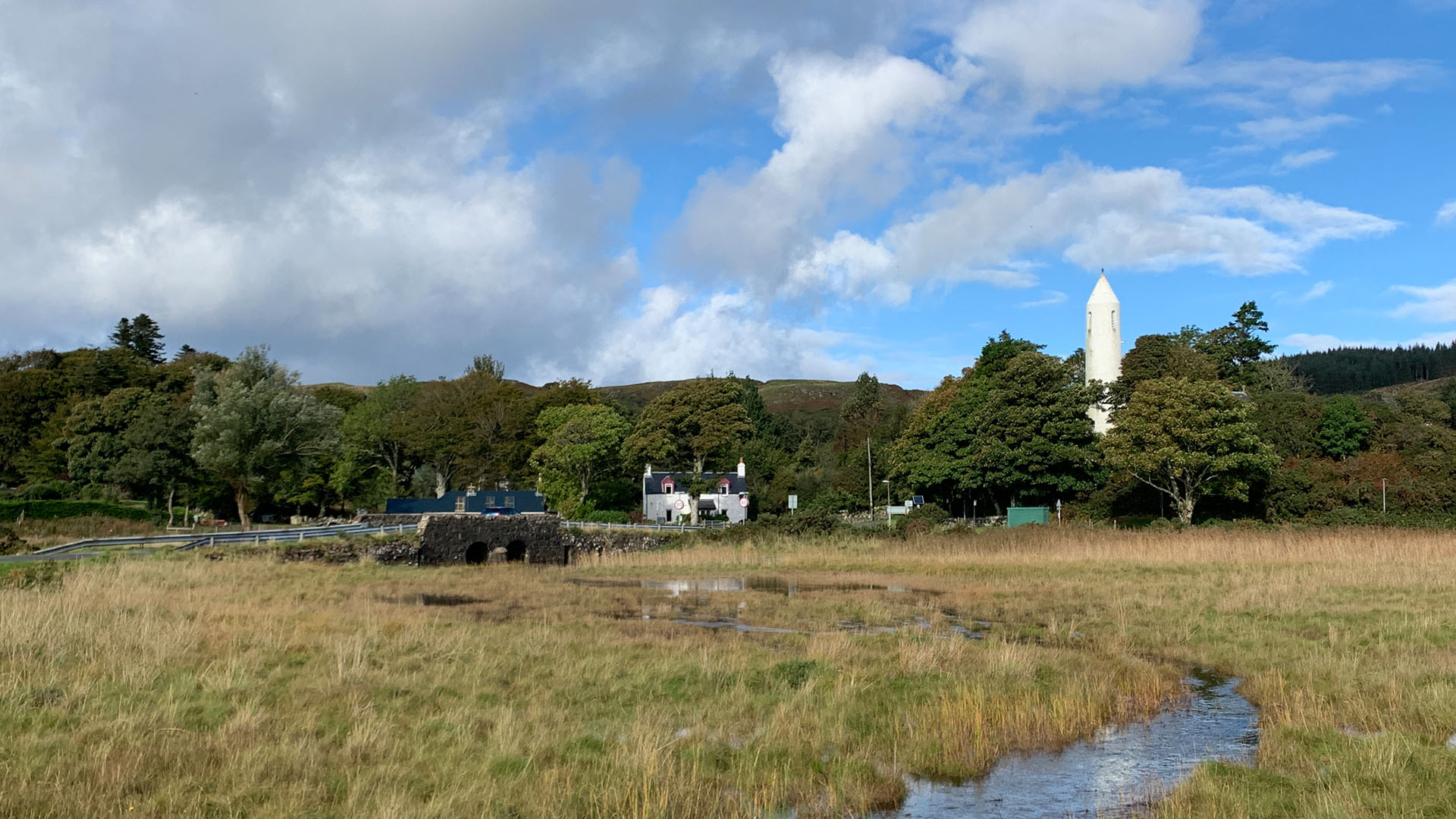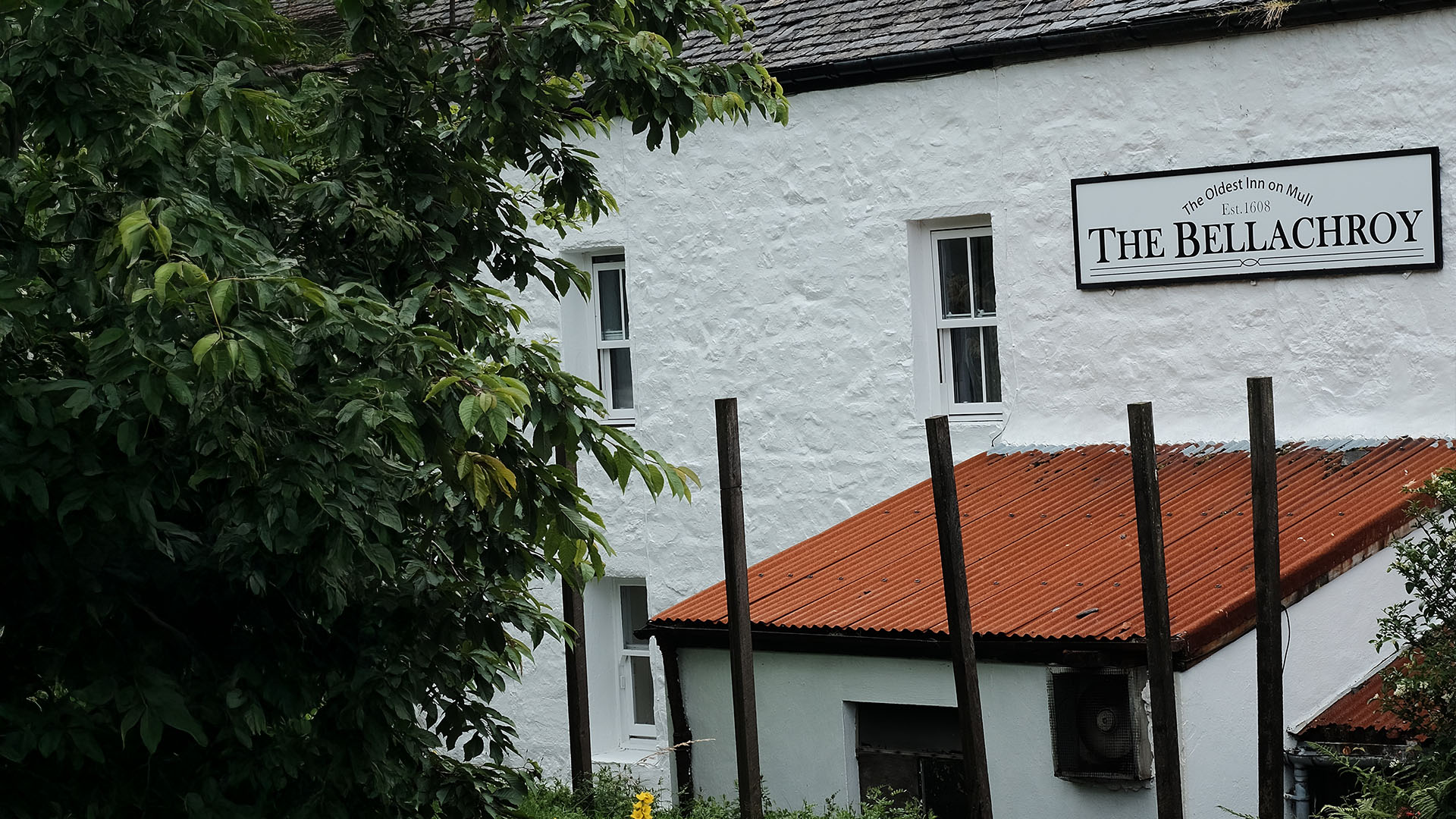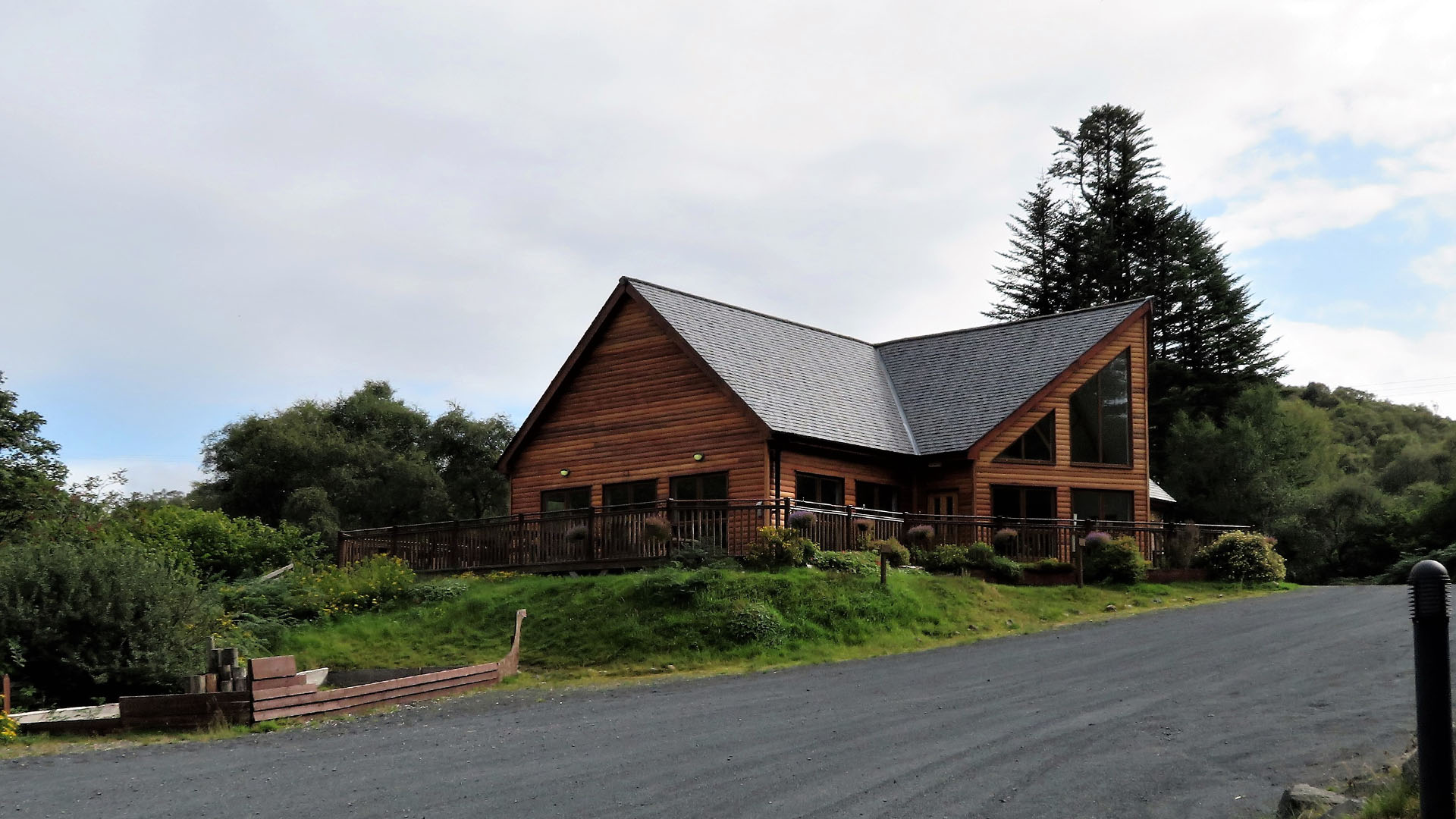Tucked into the wooded hills at the head of Loch a’Chumhainn, Dervaig is one of Mull’s most picturesque and historically rich villages. With its Viking etymology, planned 18th-century layout, and proximity to some of the island’s most dramatic landscapes, Dervaig offers a compelling blend of heritage, nature, and Highland hospitality.
A Glimpse into Dervaig’s History
The name “Dervaig” likely stems from Old Norse, meaning “good inlet,” a nod to the area’s early Viking connections. The village itself was laid out in 1799 by Alexander MacLean of Coll, who envisioned a planned settlement of 26 cottages, each with a garden and access to common grazing.
Kilmore Church, built in 1905, is a striking landmark with its pencil-shaped tower and stained-glass windows by Stephen Adam. It stands on the site of earlier churches dating back to the 13th century, underscoring Dervaig’s long ecclesiastical heritage. Nearby, the Kilmore standing stones and remnants of Iron Age forts offer glimpses into Mull’s prehistoric past.

Approaching Dervaig by Andrew Abbott, CC BY-SA 2.0, via Wikimedia Commons
Things to Do and See
- Kilmore Church is open daily and welcomes visitors to admire its architecture and stained glass. Sunday services are held at 2pm.
- Just outside the village, The Old Byre Heritage Centre provides a small museum and tearoom showcasing Mull’s natural and cultural history through miniature models, exhibits, and local crafts.

Dbrooke1829, CC BY-SA 4.0, via Wikimedia Commons
The Bellachroy Inn – A Living Piece of Mull’s History
No visit to Dervaig would be complete without stepping into The Bellachroy Inn, Mull’s oldest hostelry, established in 1608. Originally built to accommodate drovers moving cattle across the island, the inn has seen centuries of travelers and locals pass through its doors. Its storied past includes serving as a social hub, post office, and meeting point for village affairs.
Today, The Bellachroy retains its traditional charm with a layout shaped by generations of adaptations. Guests can enjoy views over Loch Cuin from the front beer garden, sip whisky from the Tobermory Distillery in the locals’ bar, and dine on hearty meals made from seasonal island produce. The inn is undergoing a sensitive refurbishment under new ownership, committed to sustainability and preserving its place in the village’s cultural fabric.
Whether you’re staying overnight or simply popping in for a pint, The Bellachroy Inn offers a tangible connection to Mull’s historic character.

Am Birlinn by Andrew Wood, CC BY-SA 2.0, via Wikimedia Commons
Where to Eat and Stay
Eating
- Am Birlinn, located just outside Dervaig, is renowned for its locally sourced dishes featuring crab, oysters, venison, and garden herbs.
- Ar Bòrd in the centre of Dervaig is an intimate restaurant serving seasonal set menus. Both places reflect a dedication to Mull’s produce and hospitality.
Staying
- Killoran House provides tranquil surroundings and gourmet breakfasts.
- Druimnacroish is a peaceful bed and breakfast with a conservatory dining space.
- Cuin Lodge overlooks the loch and offers comfortable lodging close to village walks.
- Ardbeg Guest House features friendly hosts and a garden setting.
- For budget-conscious travelers, Dervaig Bunkrooms at the Village Hall offer simple en-suite accommodation with shared facilities.
Wildlife and Nature
Loch Cuin and the surrounding hills are rich in biodiversity. Otters, herons, and sea eagles frequent the loch, while pine martens, red deer, and dozens of bird species inhabit the woodlands and moorlands. Wildlife walks are accessible directly from the village, offering natural immersion without venturing far.
Getting There
Dervaig is accessed by scenic single-track roads from Tobermory (6 miles), Calgary (5 miles), and Salen (13 miles). The drive winds through forested hills and lochs, setting the tone for a quiet, immersive visit to Mull’s northwest corner. The village itself is compact and easily walkable, ideal for exploring by foot.
